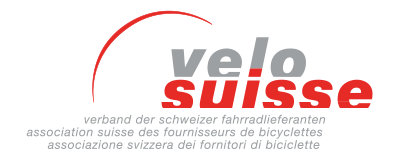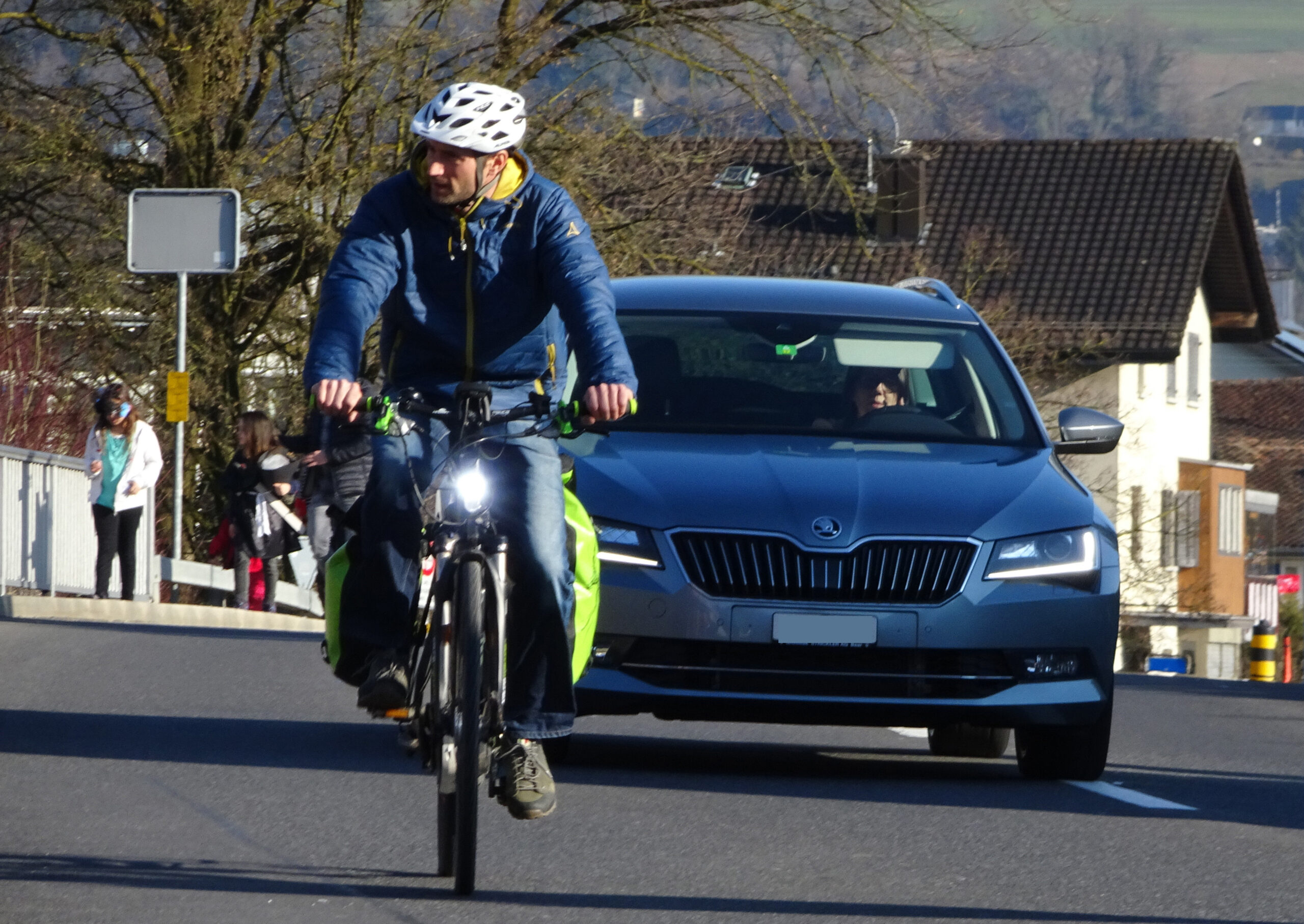From April 1, 2022, there will be a general daytime running light obligation for all e-bike riders and from April 1, 2024, a speedometer obligation for fast e-bikes (up to 45 km/h) with a transition period until 2027 for S-pedelecs already in circulation. The Federal Roads Office, FEDRO, has clarified the new regulations at the request of Velosuisse. The most important facts in brief:
- The daytime running light applies to all e-bike types without exception, including e-MTBs and e-road bikes.
- The existing lighting can also be switched on as daytime running lights; no special or separate daytime running lights need to be fitted.
- The daytime running light on e-bikes does not require type approval in Switzerland.
- For (daytime) running lights, clip-on battery lights that can be removed (for theft protection and recharging) are also accepted.
- The daytime running light must not flash or dazzle and should be visible at 100 meters. The light intensity is not specified in more detail.
- The speed display on fast e-bikes does not have to be calibrated. However, it should at least display the actual speed and may not deviate more than 10 percent plus 4 km/h above the actual speed.
- Even slow e-bikes, for which there is no speed limit, can in future be fined CHF 30 for speeding.
Questions about daytime running lights in detail:
Is there an exception to the mandatory daytime running lights for sport e-bikes or e-MTBs?
No, there are No exception for sports vehicles. The obligation to ride with lights also during the day applies to all slow and fast e-bikes (motorcycles incl. light motorcycles, see Art. 18 VTS). However, there is no change to the equipment requirements for the lights (i.e. there is no obligation to equip with daytime running lights). From April 1, 2022, only the obligation to drive with lights during the day will be newly introduced. If there is no daytime running light, the minimum lighting already prescribed today can be switched on.
On which roads and streets should the mandatory daytime running lights apply?
The lighting obligation applies to all public traffic areas. A traffic area is public if it is not used exclusively for private purposes and can therefore be used by an undefined group of users. A forest path or a bike trail is therefore usually a public road and the lighting obligation also applies there.
Does the daytime running light only apply to the front, as it does to cars?
Yes, if so-called daytime running lights (special lights) are fitted for driving with lights on during the day. If there are no daytime running lights, the minimum lighting already prescribed today can be switched on. This means at least one white light directed to the front and one red light directed to the rear, resting light (Art. 178a Para. 1, resp. Art. 179a Para. 1 VTS).
Is a light intensity defined for the daytime running light?
In the case of low-speed e-bikes (light motorcycles), the lighting equipment does not require type approval (with the exception of any direction indicators, the installation of which is optional. However, if they are present, they must be type approved). The lights must not dazzle and must be visible from a distance of 100 meters.
Also for fast e-bikes (in contrast to the other lighting devices) there is no obligation for type approval for the daytime running light (see Annex 1 No. 2.1. TGV). However, the luminous intensity should be roughly equivalent to the state of the art, as is otherwise the case for daytime running lights (e.g. on small motorcycles).
Are removable lights allowed during the day?
According to Article 178a Paragraph 1 VTS, the lights must also be permanently attached to slow e-bikes. We consider lights with a click lock (or comparable attachment) to be permanently attached lights (they can be removed when the vehicle is parked, e.g. to protect against theft).
The regulation comes into force on 1.4.2022. Is there a transition period?
The obligation to drive with lights on during the day will apply immediately from April 1, 2022.
FEDRO has prepared a compilation of the applicable regulations on the registration and operation of motorcycles and electric rickshaws. It can be downloaded under the following link: https://www.astra.admin.ch/dam/astra/de/dokumente/fahrzeuge/zusammenstellung-elektro-fahrzeuge.pdf.download.pdf/Vorschriften%20zu%20Motorfahrraedern,%20langsamen%20E-Bikes,%20E-Trottinetten,%20E-Rikschas%20(Stand%201.02.2019).pdf
Questions about speedometer duty in detail:
The regulation defines the permitted deviation of the speedometer display. So the speedometer does not have to be officially calibrated?
The requirements for the speedometer are specified in Art. 178b Para. 3 VTS completely defined, there are no further requirements (no official calibration and no type approval required).
You can download the draft regulations with the new rules below at the media release of our office: https://www.astra.admin.ch/astra/de/home/dokumentation/medienmitteilungen/anzeige-meldungen.msg-id-86468.html
Can a fine be issued for speeding on this basis?
Yes. According to the new number 625 of Annex 1 OBV, a fine of 30 francs is imposed. This also applies to slow e-bikes - despite the exception to the speed limit.
The regulation states that the speed display must be in the field of vision of the or the handlebar. Depending on the model, this tends to be mounted on the side today. What does "in the field of vision" mean? Do side-mounted speedometers have to be moved to the center?
The speed display must be easy to see while driving. More detailed requirements are not available. Even passenger cars have speed displays that are placed in the center of the dashboard and not directly in front of the person at the steering wheel.
What is the enforcement of these regulations for foreign bicycle tourists?
Fast e-bikes registered in the EU comply with Swiss regulations. Fast e-bikes that must be registered as motorcycles in Switzerland are considered small motorcycles in the EU. The EU requirements for the speedometer are identical to the Swiss regulations (measurement accuracy, tolerance). This is of particular relevance for the import of fast e-bikes type-approved in the EU for sale on the Swiss market. In contrast to Switzerland, even the speedometers themselves are subject to type approval in the EU.
For fast e-bikes from other countries, the speedometer equipment requirement only applies if the country of origin stipulates this. For penalties for speeding in the case of those foreign vehicles that are not required to have a speedometer, see our answer above.
What is the transition period for the speedometer obligation?
The speedometer equipment obligation is mandatory for new vehicles that are put into circulation from April 1, 2024 (item IV VTS). In addition, vehicles already in circulation before this date must be equipped by April 1, 2027 (new Art. 222q VTS). The speedometer equipment requirement does not apply to slow e-bikes (light motorcycles, e.g. electric bicycles with pedal assistance up to 25 km/h and e-scooters). Most fast e-bikes already have a speedometer. Retrofitting conventional velotachos from the accessories trade is not ruled out, provided they meet the technical requirements in terms of accuracy.
January 14, 2022

